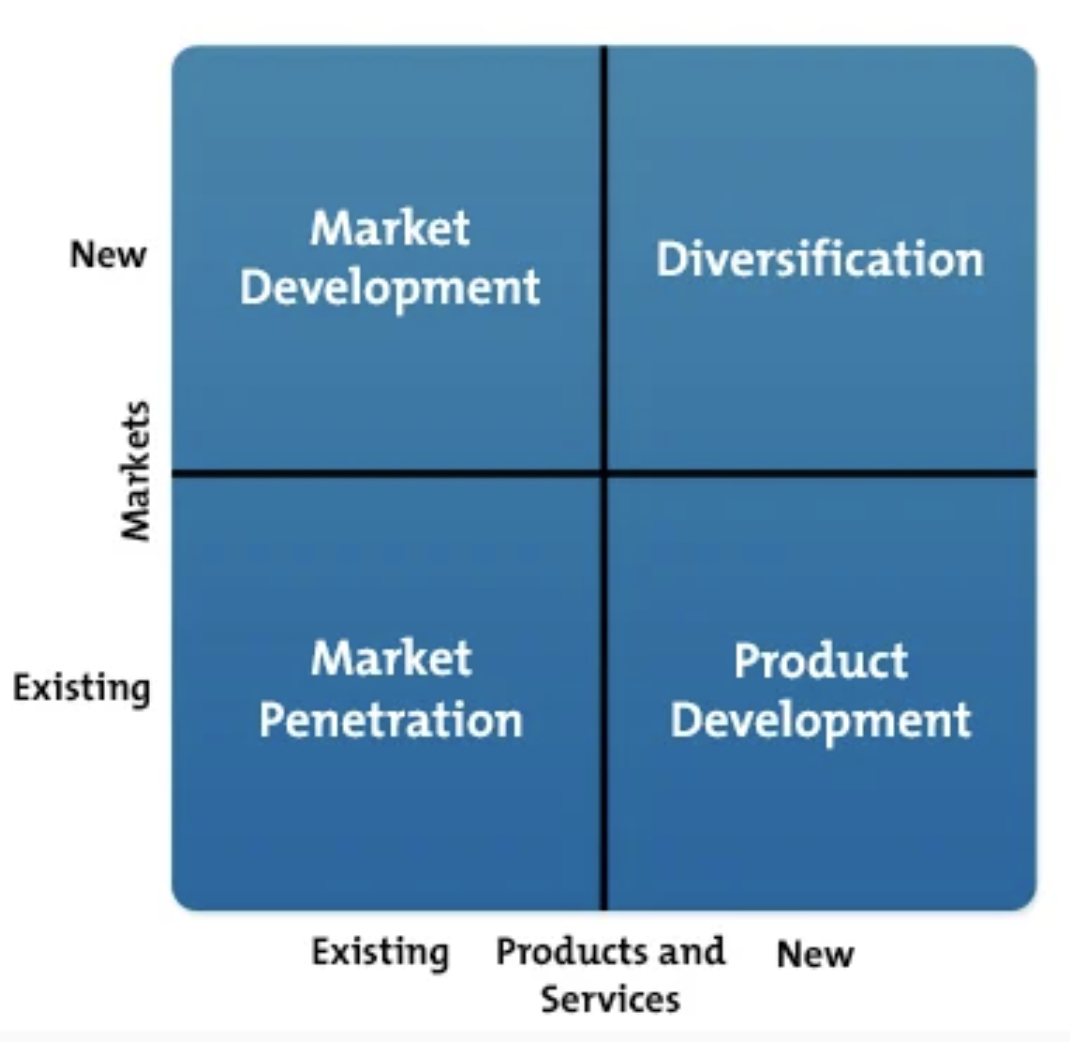Understand Market Penetration and How to Create a Strategy

Everyone wants their business to grow. This seems pretty intuitive considering effective and successful growth means your business is experiencing boosts in revenue, brand awareness, brand loyalty, and more — and we know this to be true by looking at the most successful and well-known companies today (e.g. Apple, Amazon, etc.).
The question is: What do these highly-successful companies do to ensure they put themselves in a position for strong and consistent growth?
Of course, there are a number of answers to this question based on who you ask. However, the one we’re going to focus on in this blog post is market penetration. So, what is market penetration?
How to Calculate Market Penetration
If you’re using market penetration as a measurement, use the following formula to discover how much a product or service is used by customers compared to its total estimated market. In other words, take the current sale volume for your product or service and divide it by the total sale volume of all similar products available in the market.
(Number of Customers / Target Market Size) x 100 = Market Penetration Rate
Frequently monitoring your market penetration is important in order to identify any increases or decreases in penetration. If you’re wondering how often to calculate market penetration, a good rule of thumb is to calculate it after every marketing and sales campaign you run. This will highlight any changes in penetration — and, as a result, you’ll also have a better idea of the success of your campaign(s).
Next, let’s dive a little deeper into what market penetration is and why it’s such an effective growth strategy.
Understanding Market Penetration
A company can use market penetration at the industry level to review potential for specific products or services or on a smaller scale as a way to gauge the market share of a product or service. It offers insight into how the market and your customers view your product or service.
What is high market penetration?
When it comes to market penetration, you want yours to be high. There are many benefits to high market penetration.
For instance, think about Nike. The company is a market leader in athletic shoes. When you go to the sneakers section of a store like Foot Locker or Dick’s Sporting Goods, Nike consistently takes up a large portion of the space.
That’s because retailers like Foot Locker and Dick’s know Nike delivers in sales. They also know their customers expect a wide selection of Nike products in their stores. Nike’s popularity and brand name warrant better shelving space and visibility, too. This is all a result of Nike’s high market penetration.
Similar to Nike, when you have a high market penetration…
- You’re an industry leader.
- You sell products or services that are already established within the industry.
- You have a widely-recognized brand.
- You have good visibility in the market.
- You have strong brand equity.
- You likely make your product for less than you would be able to if you were a less-established business due to the scale of your operation.
- You have a high sale volume which means you have leverage among suppliers and sellers.
High market penetration offers marketing advantage and more potential for continued growth and success as a business. Needless to say, high market penetration is the goal — but, how do you achieve it? Well, market development is a good place to start.
Market Development vs. Market Penetration
You may have heard of the term market development used in relation to market penetration before. Market development is a necessary strategy or action when trying to increase market share or penetration — it requires a clear set of steps that will lead to a boost in the number of potential customers. To increase market penetration, first focus on market development. Let’s look at an example.
Example of Market Development Increasing Market Penetration
A successful leggings brand, Booty by Brabants, has made waves in recent years in the athletic-wear industry. The brand has established itself as a seller of high-quality and unique leggings for women of all sizes.
By reviewing their market penetration, BBB was able to identify a small, existing market they could tap into — kids leggings. They determined that selling kids leggings could help them broaden their target audience and customer base for little added cost and effort.
Although BBB Kids leggings aren’t a major source of revenue for the company, they’re complementary to its existing product line and bring in new customers. BBB was able to identify an existing market they hadn’t taken advantage of yet and determine clear steps to successfully enter that market. As a result, they expanded their product line, customer base, and market penetration.
Now, let’s look at the most effective ways to get started on your market penetration strategy.
As you begin working on your market penetration strategy, you may hear the words: Ansoff Matrix.
The Ansoff Matrix is a tool with four growth strategies listed for businesses to consider.

As you move right and up on this matrix, the growth strategies become riskier for businesses. We’ve included information about the Ansoff Matrix in this article because it further proves and highlights the fact that market penetration is a highly-valuable and achievable way to effectively grow a business, even for the risk averse.
At this point, you might be wondering about the specific strategies under the umbrella of market penetration that you can deploy at your company — let’s talk about some of those next.
Market Penetration Strategies
Here are some examples of effective market penetration strategies that you may choose to focus on and/or implement at your company.
Change your pricing.
Lower or raise the cost of one of your products.
Revamp your marketing.
Rework your marketing plan and/or roadmap.
Identify the need for a new product and launch it.
Survey and analyze your customers and target audience to identify the need for a new product (or feature). Then, create that product and sell it.
Update or change your product (or a specific feature of your product).
Resolve the challenges of your customers and buyer personas more effectively by updating or changing a product or feature.
Grow business in new territories and offer for franchise opportunities.
Identify new territories in which you can expand and grow business. Ask yourself: Which new areas can we open our stores or prospect and perform outreach? You might also begin offering franchise opportunities to expand your brick-and-mortar business.
Identify a business partner to work with.
Partner or merge with another business in a way that’s mutually beneficial (e.g. run a co-marketing campaign).
Purchase a small business or competitor in your industry.
If you have the resources, consider acquiring a small business or competitor in your industry to broaden your base of customers and your offerings/ capabilities. (HubSpot did this a while ago.)
Offer a promotional program to boost loyalty.
Give customers an opportunity to sign up for a loyalty program that provides them with perks in return for giving you their contact information (e.g. discounts, birthday gifts, inside information, etc.).
Develop a new marketing campaign.
Create and launch a marketing campaign or initiative to promote your product line in a unique and new way that your customers haven’t seen before. Analyze your campaign’s success so you can refer to it in the future.
Boost sales rep activity.
Encourage sales reps to increase the number of interactions they have with qualified prospects (e.g. focus on social selling and meeting prospects where they are).
Lastly, let’s look at an example of market penetration in action.
What’s an example of market penetration?
There are a number examples of companies using market penetration to grow their business. For the sake of this piece, let’s look at Dunkin’.
Dunkin’ (formerly, Dunkin’ Donuts) was started in Quincy, MA back in the 1940’s. Since, Dunkin’ has become a globally-recognized brand. Dunkin’ has since grown substantially and opened stores in 46 countries — yet, the company’s most-loyal customers remain in New England. In fact, there are 12,500 Dunkin’s worldwide (9,000 of which are in the U.S.) — yet, over one-third of Dunkin’s stores are located in New England. In terms of market penetration, Dunkin’ continues to tap into their large and loyal market by opening and maintaining that large portion of their stores in New England.
Check out the following map for example — Boston is a small city, and you can walk between almost all 10 of these Dunkin’ locations in just minutes.

Dunkin’ knows where their customers are and that those customers want a Dunkin’ store every… well, city block.
Not only has Dunkin’ successfully penetrated their market by opening and maintaining so many stores in New England, but they’ve also increased market penetration by making specific changes to their branding and menu.
Most notably, they changed their name from Dunkin’ Donuts to Dunkin’. The company does 60% of their business in coffee and other drinks, so the “Donuts” aspect of their original name was arguably a bit misleading. The CEO of Dunkin’ said this move was important because the new name, “… speaks to the breadth of our offerings.”
The brand name change also gives a signal to customers that there are a number of other menu items available, aside from donuts. In fact, the name change was paired with many menu additions, including healthier options as well as offerings for non-dairy and vegan customers including their Beyond Sausage and almond milk.
All of these changes broadened Dunkin’s customer base and target audience by accommodating more people within the market they were already penetrating.
Invest in Market Penetration to Grow Better
We just covered a number of reasons why market penetration is so beneficial to your business’s long term success. And as you’ve learned throughout this blog post, it’s a highly-effective growth strategy that’s typically low-risk.
There are a number of market penetration strategies to choose from, plan, and implement at your company, so pick the best option for your goals and get started.
Everyone wants their business to grow. This seems pretty intuitive considering effective and successful growth means your business is experiencing boosts in revenue, brand awareness, brand loyalty, and more — and we know this to be true by looking at the most successful and well-known companies today (e.g. Apple, Amazon, etc.).



